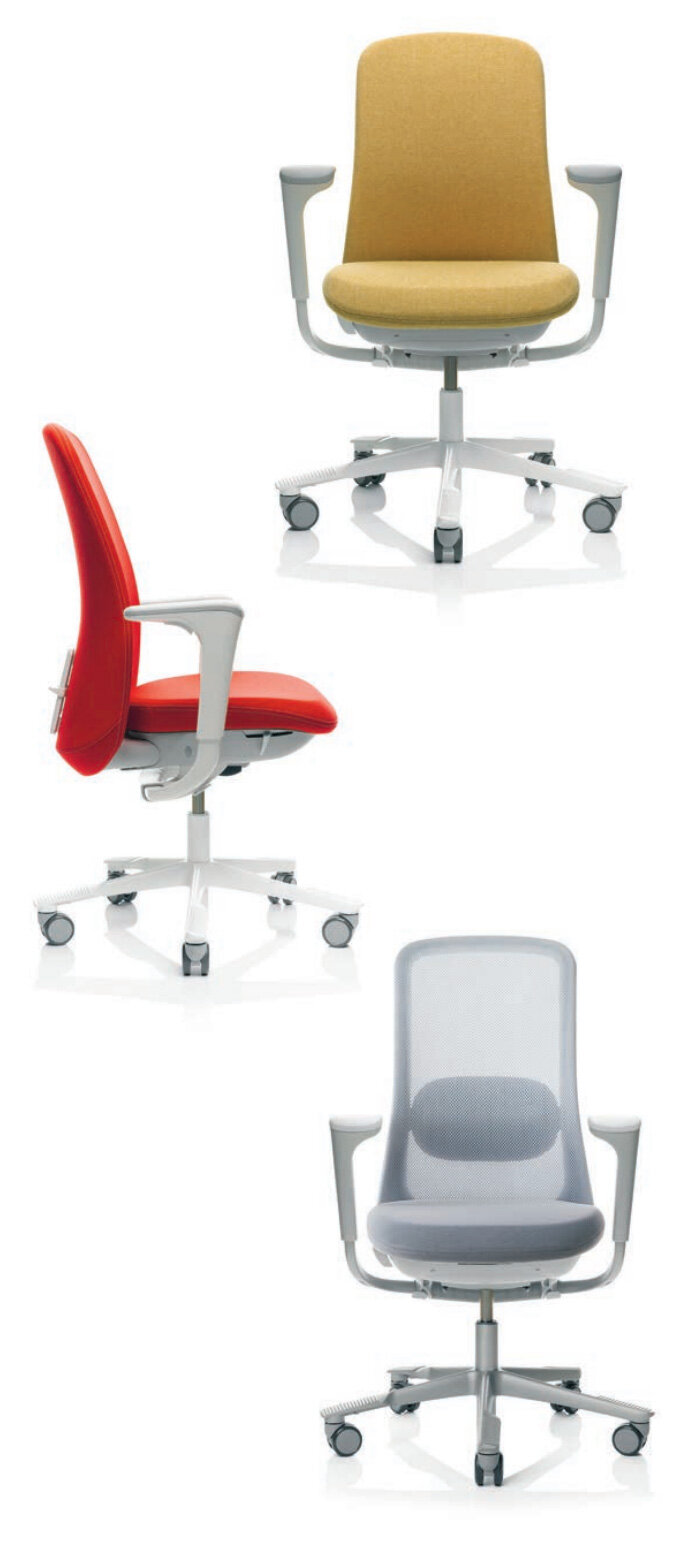Safety pays – the benefits of ergonomic office furniture
There’s been a buzz around ergonomic furniture for a while now, and rightly so. Employers who invest in the right ergonomic furniture for their employees are reaping the rewards in terms of employee health, efficiency, productivity and morale, which of course is reflected right back on their bottom line.
The interest and increasing popularity of ergonomic office furniture comes hand in hand with the increased awareness around employee health and well being. We could happily sing the praises of ergonomic furniture until the cows come home, but in the interests of time, we’ll try and keep it brief. Let’s take a look at what ergonomic furniture is, and its many virtues and benefits.
What is ergonomic furniture?
The term ergonomics comes from the Greek words ergon, meaning work, and nomoi, meaning natural laws. It’s a term applied to the study of designing objects to be better adapted to the shape of the human body or to correct its posture.
The design of office furniture has evolved over the years, with more focused attention given to it when we started to spend more prolonged periods of time in front of computers. Ergonomics has been applied to all sorts of office furniture and accessories with particular focus on office chairs, for obvious reasons.
Here’s a quick look at where ergonomics is applied to an office chair in order to prevent users from sitting in positions that might otherwise cause them harm or injury. Ergonomic office chair design reflects that everyone's physical attributes are not the same. It gives a user the freedom to adjust various aspects of the chair according to their comfort and requirements. This includes:
Seat height
A chair’s optimal seat height should allow you to place your feet flat on the ground with your thighs resting horizontally. With most desks remaining at a fixed height (unless you have a height adjustable desk) it is important that the seat height can be adjusted incrementally. The width of the seat cushion should also allow you to sit with your back resting against the backrest with around four to eight centimetres of space between the backs of your knees and the seat.
Seat width
For maximum comfort and stability, a seat’s depth should leave between two and four inches between the edge of the seat and the back of your knees. If it’s too far forward, it may put undue pressure on the back of your knees.
Lumbar Support
Lumbar support refers to the support a chair gives to your lower back. A good ergonomic chair will have an adjustable back that supports the natural ‘S’ shape of the spine, preventing you from slumping and slouching after prolonged periods of sitting down. It will also reduce stress on the spine and the pelvis.
Seat tilt
Many ergonomic chairs will allow the seat to tilt and therefore keep your pelvis in a neutral position when sitting. This prevents the problem of anterior pelvic tilt, which is a posture problem affecting people who sit for prolonged periods.
Swivel
An ergonomic chair will allow you to turn easily to reach different areas of their desk without having to strain excessively.
Armrests
The armrests of an ergonomic chair will help to reduce tension in the upper body by allowing the shoulders to relax. Adjustable armrests should be positioned so that your elbows sit comfortably on them. However, your elbows should not be able to sit on the armrest whilst you are typing as this reduces overall arm movement and can strain the forearm muscles.
Seat material
The comfort of the user is key and therefore materials that are soft and cushioned are used in ergonomic chairs, as opposed to hard textured surfaces that might cause the user’s back to sweat and cause discomfort after prolonged periods.
The benefits of ergonomic furniture
If you consider the length of time your employees spend working and sitting at their desks, then it’s obviously essential that where and how they work does not cause them any discomfort or pain. The benefits that ergonomic office furniture include:
Improved productivity
Productivity is fundamentally reliant on your employees being comfortable, present and focused when they’re working. Ergonomic furniture, whether it’s chairs, adjustable desks or supportive keyboards, are designed for maximum comfort to enable your employees to perform at their peak, without pain, injury or discomfort.
Improved employee morale
The benefits of demonstrating to your employees that you’re serious about your commitment to their comfort and safety should not be underestimated. Staff morale can have a huge impact on a company’s bottom line, through improved efficiency and productivity and reduced absenteeism. Showing your concern for employee welfare and appreciation for their work, really does pay dividends.
Cost savings
Yes, ergonomic furniture and investing in ergonomic accessories will cost your business more than if you were to purchase standard furniture and equipment. However, you will soon see a return in your investment in terms of increased productivity, reduced absenteeism due to ill health and injury and improved morale.
Our ergonomic furniture and services
Our office interiors team work closely with medical professionals such as physiotherapists, chiropractors, osteopaths and ergonomists to keep abreast of the latest developments and advances in office furniture design. As a result, we’re confident that the products that we recommend are at the cutting edge of ergonomic innovation.
Our expert services include specialist assessments to ensure that your employees get the products they need for a comfortable and healthy working life. Our services include:
Workplace DSE assessments
Disabled Students Allowance (DSA) assessments
Seating assessments for individuals with complex needs
Specialist seating and ergonomic advice
Adaptations to Premises Assessments
Full Technical Assessments
Special Aid & Equipment Assessments
Visual & Hearing Impairment Assessments
Bespoke office chair design to meet specific requirements
Office planning and design services
Space planning and call centre solutions
‘Turnkey’ furnish and refurbishment schemes
If you are moving offices and need new office furniture or you’re looking to replace old furniture, and would like more information on the ergonomic options available, then we’d welcome the opportunity to talk to you and conduct an initial analysis of your requirements. From there we can recommend ergonomic products and offer advice on furniture and accessories to meet your needs and budget.













